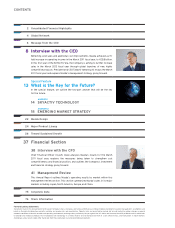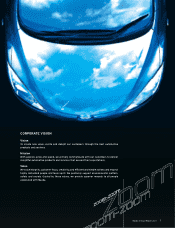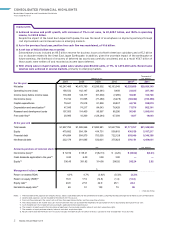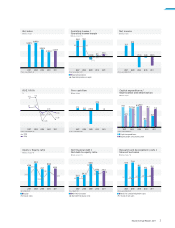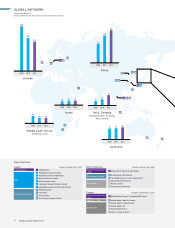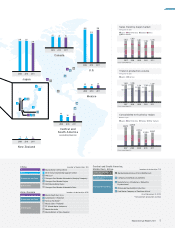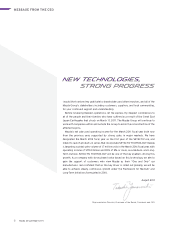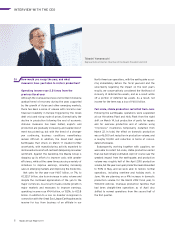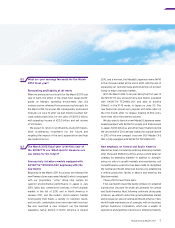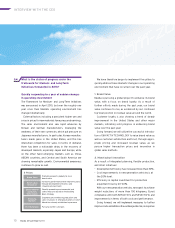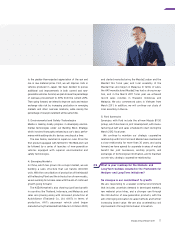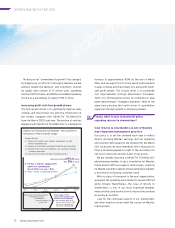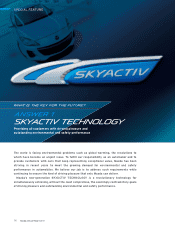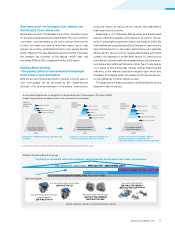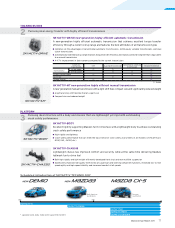Mazda 2011 Annual Report Download - page 10
Download and view the complete annual report
Please find page 10 of the 2011 Mazda annual report below. You can navigate through the pages in the report by either clicking on the pages listed below, or by using the keyword search tool below to find specific information within the annual report.
Q1 How would you recap the year, and what
measures have you taken to restore production?
Operating income rose 2.5 times from the
previous fiscal year
Although the overseas business environment showed a
gradual trend of recovery during the year, supported
by the growth of Asian and other emerging markets,
there has been a sense of unease with concerns over
financial instability in Europe triggered by the Greek
debt crisis and rising crude oil prices. Domestically, the
decline in production following the end of economic
stimulus measures has been halted, exports and
production are gradually increasing, and capital invest-
ment has picked up, but with the trend of a stronger
yen continuing, business conditions nevertheless
remain difficult. In addition, the Great East Japan
Earthquake that struck on March 1 1 created further
uncertainty, with manufacturing activity expected to
decline and a mood of self-restraint dampening consumer
sentiment. Against this backdrop, the Mazda Group is
stepping up its efforts to improve costs with greater
efficiency, while at the same time pursuing a variety of
initiatives to improve earnings, including increasing
sales in emerging markets and improving the model mix.
Net sales for the year rose ¥161.7 billion, or 7%, to
¥2,325.7 billion, due to an increase in sales volume and
despite the continued appreciation of the yen to the
major currencies. As a result of sales volume growth in
major markets and measures to improve earnings,
operating income rose ¥14.4 billion, or 152%, to ¥23.8
billion. In addition to a loss on disaster recognized in
connection with the Great East Japan Earthquake and a
reserve for loss from business of an affiliate in our
INTERVIEW WITH THE CEO
Takashi Yamanouchi
Representative Director, Chairman of the Board, President and CEO
North American operations, with the earthquake occur-
ring immediately before the fiscal year-end and the
uncertainty regarding the impact on the next year’s
results, we conservatively considered the likelihood of
recovery of deferred tax assets, and as a result wrote
off a portion of deferred tax assets. As a result, net
income for the term was a loss of ¥60.0 billion.
Full-scale, stable production restarted from June
Following the earthquake, operations were suspended
at our Hiroshima Plant and Hofu Plant from the night
shift on March 14, but production of parts for repairs
and for overseas production and of vehicles using
“in-process” inventories temporarily restarted from
March 22. In total, the effect on domestic production
was a 46,000 unit reduction in production volume, and
a roughly 10,000 unit reduction in terms of consoli-
dated wholesales.
Subsequently, working together with suppliers, we
were able to restart full-scale, stable production earlier
than we had initially estimated. April of course saw the
greatest impact from the earthquake, and production
volume was roughly half of the April 2010 production
volume, but the year-over-year production level rebounded
to 90% in May, and we were able to restore normal
operations, including overtime and holiday work, in
June. We are planning on a 4% increase in domestic
production volume for the March 2012 fiscal year, to
900,000 vehicles. Overseas production facilities that
had been straight-time operations as of April also
shifted to normal operations from the second half of
the first quarter.
8 Mazda Annual Report 201 1


